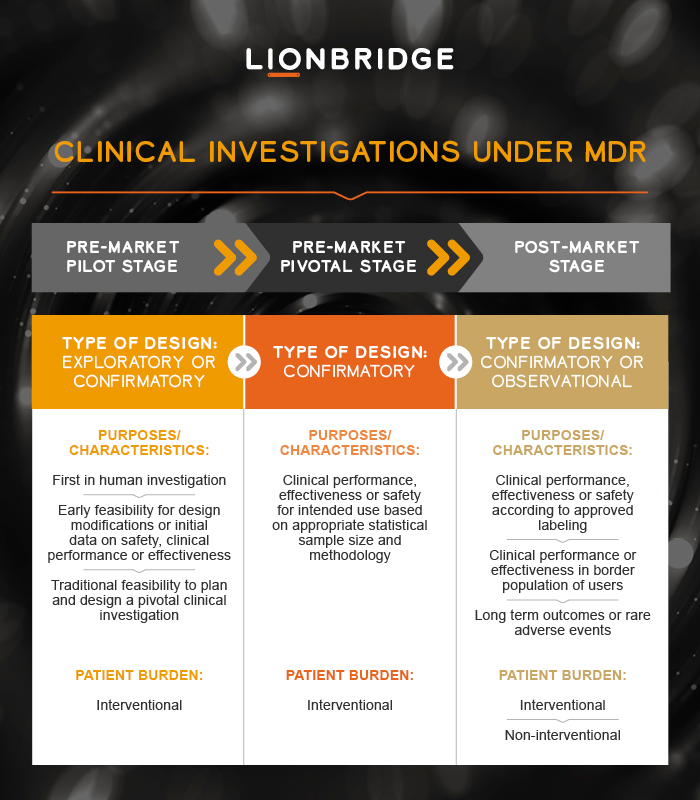LANGUAGE:
- WHAT WE DO
- GENERATIVE AI
We create, transform, test, and train more content than anyone in the world – from text, voice, audio, video, to structured & unstructured data.
Leverage AI-powered technology to bolster your global communications.

- Industries
- LAⁱNGUAGE CLOUD™
Our experts know the in-and-outs of your industry & its challenges.
Harness the Lionbridge Lainguage Cloud to support your end-to-end localization and content lifecycle.

- WHO WE ARE
Our people are our pride, helping companies resonate with their customers for 20+ years.

We create, transform, test, and train more content than anyone in the world – from text, voice, audio, video, to structured & unstructured data.
Content Services
- Technical Writing
- Training & eLearning
- Financial Reports
- Digital Experience Assessments
- Digital Marketing
- Content Optimization
Translation Services
- Video Localization
- Software Localization
- Website Localization
- Translation for Regulated Companies
- Interpretation
- Live Events
Testing Services
- Functional QA & Testing
- Compatibility Testing
- Interoperability Testing
- Performance Testing
- Accessibility Testing
- UX/CX Testing
Solutions
- Translation Service Models
- Machine Translation
- Smart Onboarding™
Our Knowledge Hubs
- Positive Patient Outcomes
- Modern Clinical Trial Solutions
- Future of Localization
- Innovation to Immunity
- COVID-19 Resource Center
- Disruption Series
- Patient Engagement
- Lionbridge Insights
Leverage AI-powered technology to bolster your global communications.
Generative AI
GenAI Marketing Solutions
Our experts know the in-and-outs of your industry & its challenges.
Life Sciences
- Pharmaceutical
- Clinical
- Regulatory
- Post-Approval
- Corporate
- Medical Devices
- Validation and Clinical
- Regulatory
- Post-Authorization
- Corporate
Banking & Finance
Retail
Luxury
E-Commerce
Games
Automotive
Consumer Packaged Goods
Technology
Industrial Manufacturing
Legal Services
Travel & Hospitality
Harness the Lionbridge Lainguage Cloud to support your end-to-end localization and content lifecycle
Lainguage Cloud™ Platform
Connectivity
Translation Community
Workflow Technology
Smairt Content™
Smairt MT™
Smairt Data™
Language Quality
Analytics
Our people are our pride, helping companies resonate with their customers for 20+ years.
About Us
Key Facts
Leadership
Insights
News
Trust Center
SELECT LANGUAGE:
This piece is part of Lionbridge’s series addressing language challenges under the new EU medical device regulation (MDR), which applies starting from 26 May 2021. In this blog, we focus on clinical investigations and some language aspects of conducting multilingual device investigations in the European market.
Clinical Data: The Heart of MDR
By now, any MedTech professional following the transition to the new medical device reforms in Europe grasps that clinical evidence is a keystone of these regulations. All devices under the MDR will now require clinical evaluation and Post-Market-Clinical Follow-up (PMCF). In addition, high-risk devices (Class III and implantable devices) will, with few exceptions, require clinical investigations as well as a Summary of Safety and Clinical Performance (SSCP). The rationale for tightening the clinical requirements are clear: to increase the availability of reliable clinical data for devices placed on the European market and to protect trial participants in clinical investigations.
As of May 1, the Medical Device Coordination Group (MDCG - the expert advisory committee established under the MDR) had released seven guidance documents related to clinical evaluation of medical devices. Four more will be published in 2021 according to their plan. In April, just a month before the data of application, a Q&A document on clinical investigations was released. It offers additional clarity for industry on the regulatory pathway for clinical investigations conducted under the MDR.
Types of Clinical Device Investigations
Different types of clinical investigations are addressed in the Q&A and are further specified in ISO 14155:2020. The investigations are categorized based on their regulatory status and whether they are conducted pre-market or post-market. Regulatory status covers the clinical development stage of the device, type of study design, purpose/characteristics of the investigation and the burden of trial participants.
Pre-market investigations may be exploratory pilot investigations where a limited number of trial participants are enrolled to establish initial safety and performance data on the device and to facilitate design modifications during product design, development and validation phases. They also may include pivotal clinical investigations conducted for the purpose of conformity assessment procedures and designed based on a pre-defined statistical analysis method and hypothesis for the primary endpoint(s).
Post-market clinical investigations can be designed to bring further confirmatory data in a broader population on the clinical performance, effectiveness and safety of the device. Or they can be observational and capture information on device safety under routine clinical practice such as long-term outcomes or rare adverse events.
What is clear from the MDR, the ISO 14155, and the different types of investigations is that clinical device studies may be carried out throughout the life span of the device. Medical device manufacturers are obligated to continuously and systematically evaluate the clinical performance and safety of their device portfolio.
What ISO 14155:2020 Says About Language
As for human pharmaceutical clinical trials, medical device investigations under the MDR should be conducted under Good Clinical Practice (GCP). GCP for medical devices is defined in ISO 14155:2020. Section 9.2.2 of the ISO standard states that the sponsor of the investigation is responsible for ensuring the accuracy of translations for multinational investigations. It states that national or local requirements may apply for preparation of documents and materials in a clinical study.
All information provided to trial participants, such as informed consent forms and subject information, should be in writing and in native, non-technical language which is understandable to the trial participant. Also, labeling information such as the Instructions for Use and the packaging must include a statement that the device is exclusively for use in a clinical investigation.
National regulations apply for translations of labeling content, so sponsors will need to check local requirements to ensure compliance. Numerous sections in ISO 14155 contain a footnote referring to potential national or local regulatory requirements. Such notes force sponsors to check compliance with national language requirements even under the harmonized MDR and ISO standards.
The new regulation has not really lifted the burden of translations on manufacturers or clinical study sponsors.
The Absence of Language Harmonization Under MDR
Although the MDR brings legal harmonization of the general safety and performance requirements for devices across the entire European Union, it has not driven similar harmonization in language requirements.
The MDR has a general requirement for manufacturers to translate certain documentation into official Union language(s) in markets where devices are made available. Also, it requires that language which touches intended users is indelible, legible and comprehensible. This not only includes content intended for trial participants in clinical investigations, but also content that touches other intended audiences such as labeling, Instructions for Use, implant cards and summaries of safety and clinical performance.
Language and translation requirements are per definition a national matter in the multilingual European Union. Even under the new harmonized Regulations, it remains up to member states to determine which local language(s) is required for different types of content.
The new regulation has therefore not really lifted the burden of translations on manufacturers or clinical study sponsors. On the contrary, the burden has only become heavier because the amount of documentation and reporting has heavily increased under the MDR. Manufacturers will still need to check local language requirements after the regulation enters into force and repeals the current medical device directives.

Ensuring Language “Accuracy” as Noted in MDR and ISO 14155
Besides the very general requirements on language described above, there is little regulatory guidance on how to ensure proper language and translation quality. Neither the MDR; nor the ISO 14155 or national regulations bring practical advice on quality assurance of translated content, except from a rather useless statement that translations should be “accurate”. What does this really mean? How do you as a manufacturer or study sponsor ensure that translations are “accurate” across all language versions?
There is no simple response to this question. Determining a proper quality control translation process for your device documentation will depend on a number of aspects. You need to consider:
- the purpose and audience of the content
- the sensitivity and timing of your communication
- regulatory timelines
- study budgets
As a language service provider working for over 20 years with the MedTech industry, Lionbridge can set up different translation workflows for you based on your needs. The more you centralize translations for your clinical device documentation, the better and more efficient translations you will get. We will generally recommend content intended for users, trial participants or patients to have a back-translations and a comparative review step.
The goal for any medical device is to ensure it is used as intended and without any safety incidents. Any information, instructions or user interfaces you put in front of your users in local language will essentially impact the outcome and health benefits of your products. Also, you should consider these steps for any sensitive results communication on the performance of your device, for example the Summary of Safety and Clinical Performance or other sensitive information you will need to publicly disclose to the EUDAMED database. Adding these steps will help ensure the accuracy of the translation because a back translation is carried out by an independent translator without access to the source text. A translation workflow may include a number of other quality steps e.g., quality control inspections, linguistic review or clinician review. Translation memories also serve to obtain consistent translations across your different content for each device.
Across the life sciences industry, regulations can create what seems like ever-increasing complexity. Lionbridge’s end-to-end services and flexibility mean our clients never need to interrupt their work to manage linguistic work—that’s where we shine. Get in touch today.


